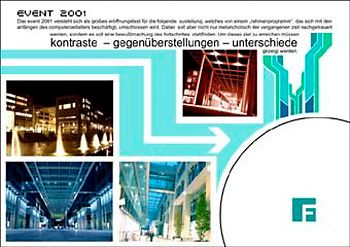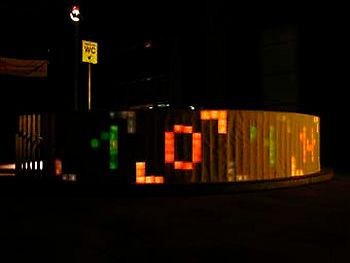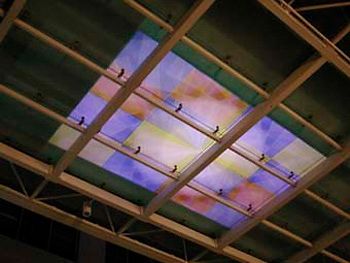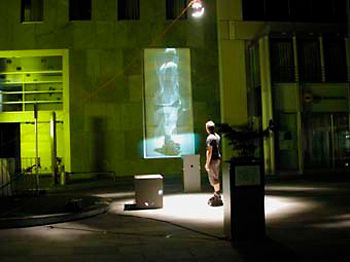Student*innen der FH St. Pölten
:
Interventionr4
Back
Information
The 'interventionR4 2001' was an independent event based on the experiences and ideas from the year 2000, to be followed by an exhibition by students of the St. Pölten Fachhochschulstudiengang für Telekommunikation und Medien. As the focus in terms of media for the makers of the telecommunications and computer publications is always on the future, this project was an attempt find a way to look back to the beginnings of these economically promising inventions.
Curator: Markus Wintersberger
The aim of 'interventionR4 2001' was to develop a programme of events running up with a seamless transition to the subsequent exhibition – i.e., to develop a supplementary programme that went through one entire event like a red line. The overall framework was conceived as an independent volume within which the actual exhibition could be experienced. The students wanted to achieve this by the intensified employment of improved technology and additional organisation and time. As thinking about ideas for a sequel began at the event in 2000, the preparations for the coming event were so far advanced that the realisation phase could already begin in early October 2000. With its architectural volume combining art and technology, the ir4 2000 had represented an ideal platform for presentation for an event intended to confront its visitors with multimedia interventions in existing public space. The ir4 2001 was particularly suited as a backdrop for this confrontation. In 2001 the focus of the artistically designed multimedia exhibition project by the St. Pölten Fachhochschule was on mutual exchange between the event and the visitors as well as the Regierungsviertel and local residents. In 2000 addressing the architecture of the Regierungsviertel had been the red line running through the individual installations, in 2001 people interacted with the ir4. This concept was translated by having the students provide opportunities for the viewers to interact with the work they developed by themselves. In an age of exceptional technological possibilities but frequent ignorance, too, to do this in a way that the users' could cope with provided an extremely interesting challenge for the conception of these man-machine interfaces. The event was intended to show that technology and media achieve their justification through use. It was intended to show that things do not work without the individual's or the group's contribution.





